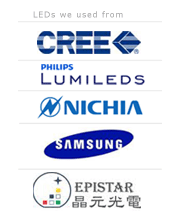News
Search
Popular search



The California Energy Commission (CEC) set out to determine the level of performance necessary for an LED light bulb to meet or exceed customer expectations for residential lighting (referring only to lamps that can directly replace incandescent lamps).
After reading the Voluntary California Quality Light-Emitting Diode (LED) Lamp Specification document, I conclude that the overall goal seems mixed—some might even say contradictory.
The specification states that the idea for an LED light bulb standard came out of a 2011 Energy Policy report that identified California as being at the “beginning of one of the largest energy savings opportunities in the history of the lighting market”. The need, therefore, came out of an energy savings requirement. The specification itself clearly indicates however, that the primary intent is to “encourage market penetration of the high-quality LED lamps that meet customer expectations regarding performance and light quality”. Examples of attributes that satisfy performance and light quality include:
? Color temperature
? Color consistency
? Color rendering
? Dimmability
? Rated life/warranty
? Light distribution
In this sense, the goal is not energy efficiency.
The California Specification explains that luminous efficacy is not the key priority. The argument is that LEDs are by definition efficient, so the difference between a high-efficient LED and a low-efficient LED is too small to place a high priority. Customers, they say, place a greater emphasis on performance and quality. Without these factors, technology adoption will be slow (just look at what happened to CFLs, a technology with poor performance and light quality).
State regulated utilities currently offer rebates for LED light bulbs to promote energy conservation in California. Pacific Gas and Electric (PG&E), for example, provide a $5 rebate on Cree’s 60W equivalent 2700K lamp—an 80 CRI LED lamp with a power consumption of 9.5W. However, PG&E offer a $10 rebate on Cree’s 90 CRI LED lamp, which consumes 13.5 Watts, but meets the “California Quality” Standard. The incentive is clearly on light quality instead of energy savings.
Considering there are an estimated “530,000,000 general service Edison Screw lamp sockets in home and places of work” (as stated in the Specification), would a 4 Watt differential per lamp not make a significant impact in energy consumption? Multiply that across North America (I assume the CEC would like their specification to be adopted outside of the state), and it most certainly would.
Does the California Specification therefore, do due diligence in “supporting the goals of the State of California and the California Energy Commission by promoting energy conservation”, as stated in Voluntary California Quality Light-Emitting Diode (LED) Lamp Specification document?
I spoke with Owen Howlett, who develops energy codes and standards for the California Energy Commission, about this disconnect. Mr. Howlett explained that, in fact, the “whole purpose of the Quality LED Specification is to achieve energy savings”. To quantify energy savings, Howlett continues, you have to decide what your baseline for energy savings is. “Almost all the experts we consulted during the development of the Specification told us that 80 CRI LEDs would not achieve significantly more market penetration than CFLs have, especially if the market just becomes a race to produce the cheapest possible ENERGY STAR-complaint lamp.”
The CEC’s argument, therefore, is that if consumers are unhappy with the light quality of an 80 CRI LED lamp—which experts say they will be as it fails to replace the much loved light quality of an incandescent—then consumers will not switch away from inefficient incandescents. If LED adoption remains low due to the unsatisfactory light quality, energy savings can never be realized.
“Now that we have the Quality Specification”, Mr. Howlett continues, “manufacturers who are producing high performance lamps can point to our standard and say ‘our lamp meets this higher level of quality’; before the Specification was developed, it was much more difficult for those manufacturers to convince consumers or purchasers of the quality of their lamp.”
From our perspective at Leapfrog Lighting, where we place a high emphasis on light quality, we certainly understand Mr. Howlett’s point. “The difficultly of proving the high quality of our LED lamps when light quality is not currently quantifiable and part of a mandatory standard is difficult”, says CEO Stephen Naor. “Apart from a demonstration, being able to show compliance with a recognized light quality standard would be extremely helpful”.
“For the first time, we now have lamps that completely fit the purpose of replacing the residential incandescent A-lamp”, says Mr. Howlett. “Color performance is essential, but all the other attributes of lamp performance are also important, and ENERGY STAR takes care of all those other attributes. Without ENERGY STAR there’s no way we could have written the Specification, and our advice is that the Quality Specification and ENERGY STAR should always be used together.”
But what about the higher rebates offered for a less efficient, though higher quality, LED light bulb?
“In terms of rebates, there are still some legacy programs in their final phase in California, but the state’s intention is that rebates should only be given to LED lamps that meet the Quality Specification”, says Mr. Howlett. “It’s very difficult for consumers to make informed judgments about lamps at the point of purchase, so we want to offer them a highly discounted lamp that they will buy because it’s inexpensive, and which will meet or even exceed all their expectations. The long-term goal is to establish a clear difference between LEDs and CFLs in the mind of the consumer. Failure would be if consumers think of LEDs as being more-efficient CFLs; success will be when consumers think of LEDs as more-efficient incandescent lamps



